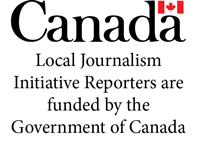In the immortal words of Yogi Berra, what we have happening right now feels like “déjà vu all over again” – only with a difference.
Winter this year swept in with a wave of COVID and other respiratory illnesses, overwhelming hospitals, just like the past couple of years. Medical experts warned this would happen, and have been advising people to wear masks. The difference is, this time a mask mandate is not in the books.
Once the arguments about not wanting to cause fears that might negatively impact the economy, and that the public has the knowledge and sense to heed warnings without any need for a mandate, have been explored and discarded, one is left with the conclusion there is no level of government willing to risk the ire of those who regard masks as a moral affront and a threat to their freedom.
Somehow, a health matter has become politicized to the point that authorities dare not mandate masks, even though it would help prevent the transmission of many diseases, and even though our hospitals are presently inundated with very sick people. The prospect of sinking an already foundering health system is apparently less scary than a crowd of riled-up anti-maskers.
Back when masks were mandated, protesters resorted to such tactics as going to a restaurant or other business unmasked, accompanied by friends with cell phone cameras, in the clear hope of some sort of loud confrontation with staff and/or police to post on social media. They also accosted mask-wearing medical staff entering hospitals and even blocked ambulances.
There were similar stories about what happened during the Spanish Flu pandemic a hundred years ago. Early on, people complied with strict mandates requiring everyone to wear masks and avoid public gatherings. By the third wave of the pandemic, people had grown weary of such mandates, and there was such a backlash that government stopped trying to slow down the spread of the disease. The resulting death toll was horrendous.
Fast forward to the present. Some people are wearing masks again. Some never stopped. Their efforts would be more effective if more of us wore masks to prevent sharing viruses. How it works is, I wear a mask to protect you; you wear a mask to protect me. However, a substantial portion of the population has deemed it their right to go wherever they want, whenever they want, coughing and sneezing all over the place if they want – normalcy, whatever the cost.
We have a lot more tools at our disposal to control disease than our counterparts did a century ago. We have vaccines, effective treatments, modern sanitation, and technology – everything from air purifiers to little bottles of hand sanitizer. And we have knowledge.
We know our enemy in a way people a century ago did not – how it spreads, who it targets.
We know why masks and limiting social contact slow down the spread of disease. What remains a mystery is why some people are violently opposed to such measures, preferring to risk their lives, as well as the lives of everyone they come in contact with, not to mention the viability of our hospitals.
They are tired of COVID, of course. We all are. But we cannot snap our fingers, make a wish and have it disappear. COVID, the flu and other respiratory diseases are with us for the foreseeable future.
Unfortunately, the politicization of masking makes it highly unlikely that politely asking people to mask up will work. If given the choice between masking or not, it is easy to predict many, if not most, will dispense with the mask.
Perhaps the prospect of our health care system collapsing under the pressure of a bad season of COVID and other viruses will trigger a sudden burst of sanity.
A couple of decades of government neglect of health care left hospitals – in fact, the entire system – in trouble. It was pushed to “critical” by two years of COVID. At this point, the patient is circling the drain. Masks seem a small price to pay for a save.


